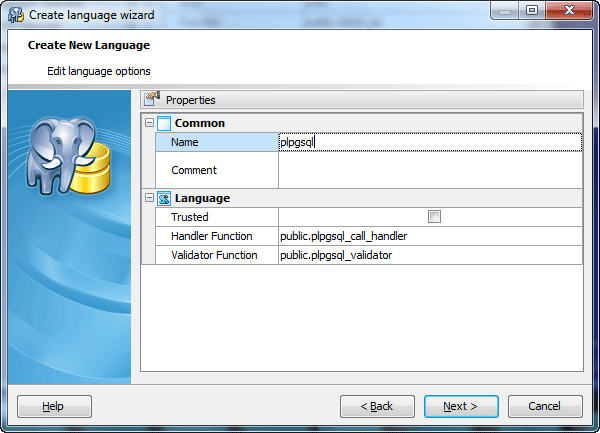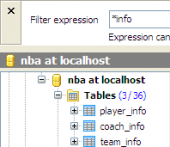PostgreSQL Maestro online Help
| Prev | Return to chapter overview | Next |
Create Language Wizard
Create Language Wizard guides you through the process of creating a new language. See How To Create Language to learn how to run this wizard.
The basic principles of Create Object Wizards in PostgreSQL Maestro are explained in a separate topic. Below you will find a description of wizard steps that are unique for the current object.

Comment
The box allows you to set optional text to describe the new language.
Trusted specifies that the call handler for the language is safe, that is, it does not offer an unprivileged user any functionality to bypass access restrictions. If this key word is omitted when registering the language, only users with the PostgreSQL superuser privilege can use this language to create new functions.
Handler Function
Specify the name of a previously registered function that will be called to execute the procedural language functions. The call handler for a procedural language must be written in a compiled language such as C with version 1 call convention and registered with PostgreSQL as a function taking no arguments and returning the language_handler type, a placeholder type that is simply used to identify the function as a call handler.
Validator Function
Set the name of a previously registered function that will be called when a new function in the language is created, to validate the new function. If no validator function is specified, then a new function will not be checked when it is created. The validator function must take one argument of type oid, which will be the OID of the to-be-created function, and will typically return void.
A validator function would typically inspect the function body for syntactical correctness, but it can also look at other properties of the function, for example if the language cannot handle certain argument types. To signal an error, the validator function should use the ereport() function. The return value of the function is ignored.
| Prev | Return to chapter overview | Next |





 Download
Download Buy
Buy
